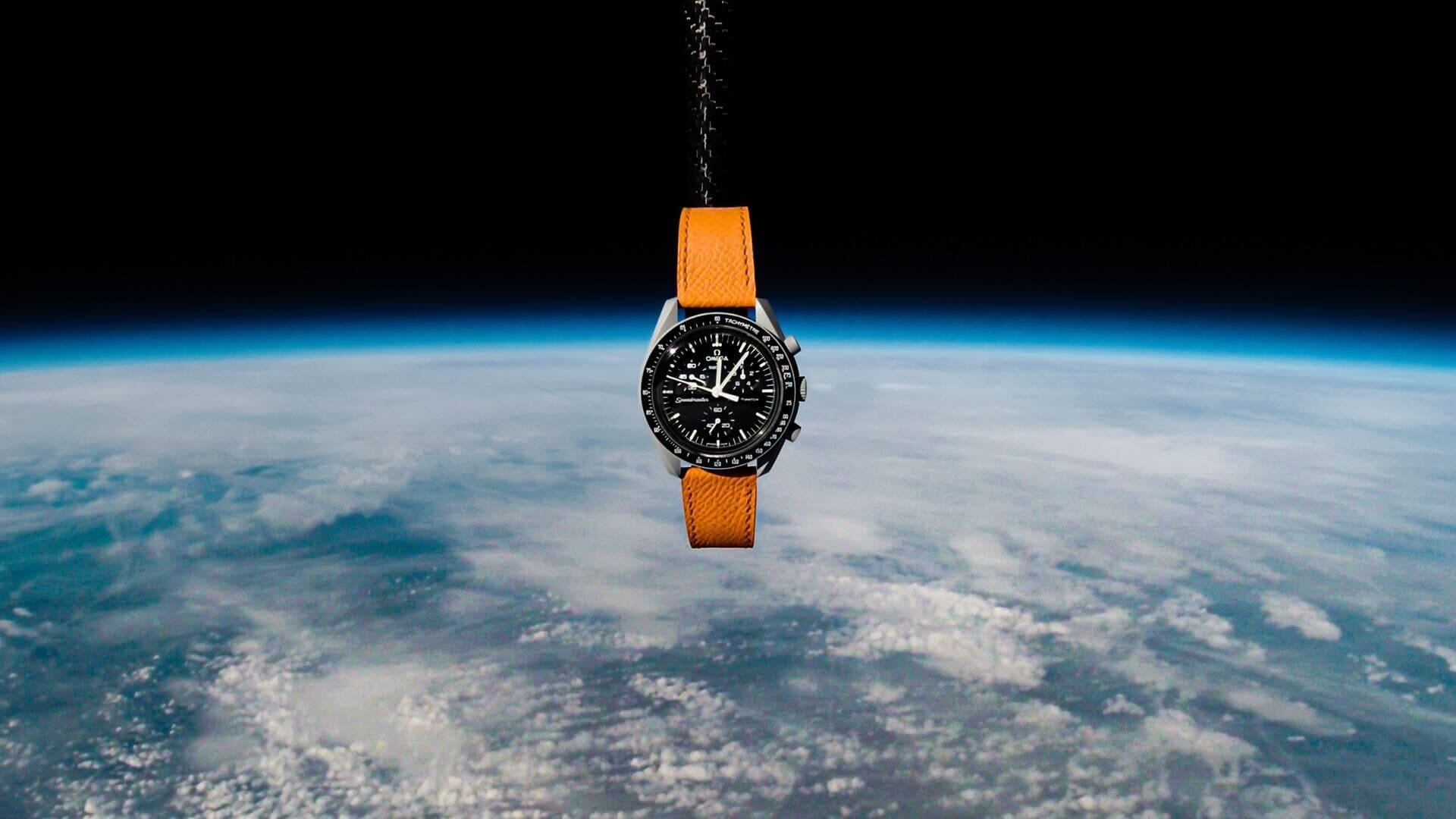Why three guys decided to blast a MoonSwatch into space
Luke BenedictusSpace may have been the final frontier for the Starship Enterprise. But for watch brands it’s become a pretty well-travelled destination. Last year’s biggest watch release, Swatch’s BioCeramic MoonSwatch, was a playful homage to the original Moonwatch, and resulted in nine watches each connected to nine planets in the solar system. Yet beyond that, the extraterrestrial element was strangely underplayed. “We recognised that, actually, no one was really talking about the moon connection and the link to space for this watch,” says Justin Hast, a British watch enthusiast and publisher of The Watch Annual, a compendium of the best of the year’s watches.
Together with two colleagues, Ciaran Grealish and James Allen, Justin decided to change that. Which is why the trio decided to send a MoonSwatch 33,800m above the Earth and into space. This maiden space voyage for the watch will be good news for cash-strapped astronauts everywhere, too. “It has now landed back on earth safely and it actually survived all of the pressures exerted on it, in a similar way that the original Speedmaster met all those criteria for NASA,” Justin says. “This watch has survived and it’s still working.”
The obvious question here – for those of us not in possession of our own spaceships – is how do you blast a MoonWatch into space?
“We worked with a company based in Sheffield in the UK called Sent Into Space,” Ciaran explains. “They actually started as a company that would test components in space on behalf of rocket companies, and pivoted into a marketing company.”
The MoonSwatch was attached to a carbon-fibre rig with a fixed camera and then pinged into orbit about 34km above the earth, at which point, the balloon attached to it burst. “Thankfully, when it re-enters the atmosphere, a parachute opens and then it slowly descends back to earth,” Ciaran adds. “So the space flight in itself took about four hours and it travelled about 350 miles from west to east to across the UK.”
The watch was eventually retrieved from a muddy field – you can see images of the crash landing on Instagram here. But that’s not the end of this cheerfully bizarre project. Having captured the MoonSwatch’s journey on film, the trio – who go by the name of For Exhibition Purposes Only (FEPO for short) – have split the space journey down into five second clips. Each clip is available to buy as an NFT that costs about £30 and that displays the metrics of that part of the journey in terms of its longitude, latitude, speed and pressure. “No, nobody knows the slice of the journey they’ve got – that’ll be revealed on March 1,” Ciaran says. “Maybe you’ll own the crash landing, maybe you’ll own the balloon burst, maybe you’ll own that moment of serenity in space.”
If the mere mention of non-fungible tokens is about to make you zone out, don’t worry: the NFTs also double as virtual raffle tickets. The winner of the random draw will get the well-travelled MoonSwatch itself (the Mission to the Moon as it happens). Twenty per cent of proceeds will also go to the Make-A-Wish Foundation.
All up, it’s a wacky little exercise, particularly as it’s been conducted independently from the Swatch Group. It’s FEPO’s very first initiative too, but they hope that they’ll soon be doing more.
“We thought for a long time there was room for a brand in the watch space that didn’t produce watches, but that you could collaborate with,” Ciaran says. “That could involve a little bit of fun or it could involve experimenting with new technology, which we’re doing here in the form of NFTs. This wasn’t taken too seriously, but we hope to build a small community.”
“We’ve actually got quite a few really, really good ideas,” Justin adds. “None of the others involve space, but all of them are fun.”
Much like the Starship Enterprise, it seems, FEPO intend to keep exploring strange new (horological) worlds and boldly go where no man has gone before.





